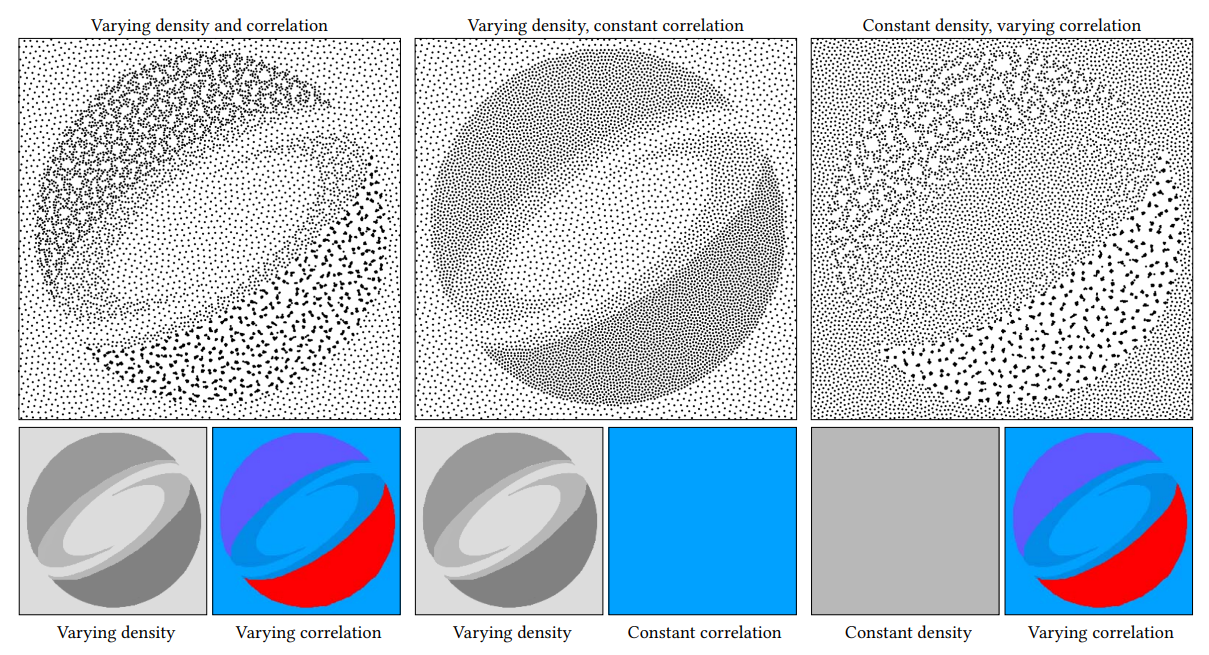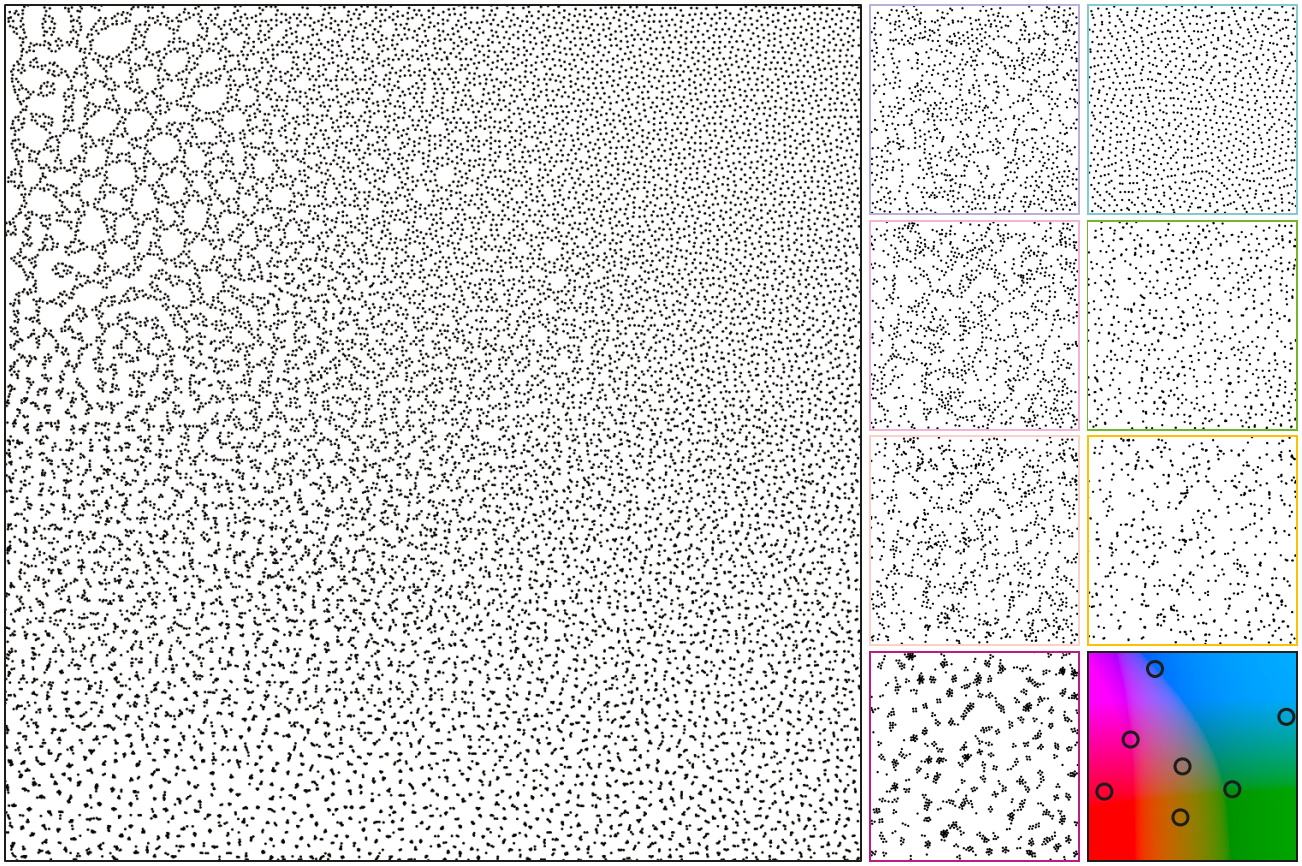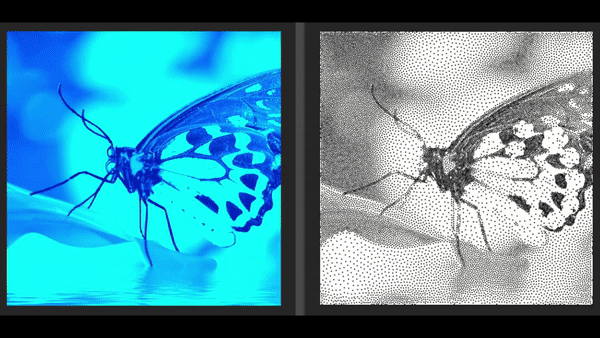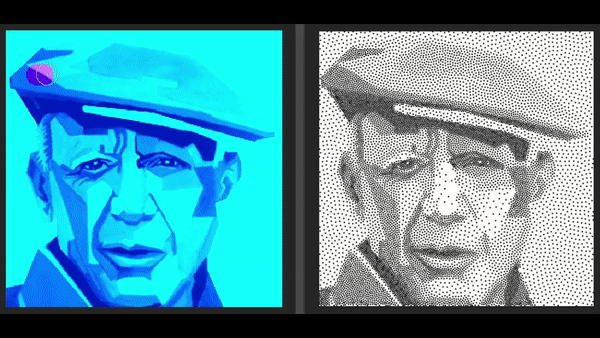

Our framework allows manipulating density and correlations independently. Top row shows the point set synthesized using the density (left) and the correlation map (right) shown in the bottom row. The first column shows a point set when both density and correlation are spatially varying. Second column has constant correlation but spatially varying density. Third column point set reproduces the Siggraph logo just from spatially varying correlations.



